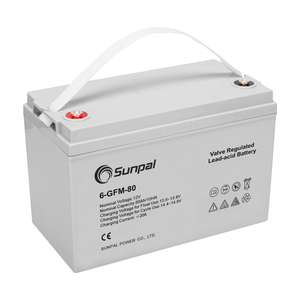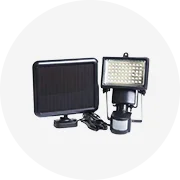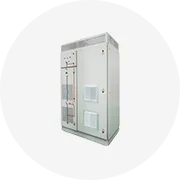Types of 12V 68Ah Batteries
The 12V 68Ah battery delivers 12 volts with a capacity of 68 amp-hours, making it ideal for applications requiring consistent and reliable power. These batteries power various equipment from vehicles to backup systems and come in several types, each with unique characteristics and advantages.
| Battery Type | Key Features | Best Applications | Lifespan |
|---|---|---|---|
| Lead-Acid | Low cost, simple manufacturing, widely available | Vehicles, backup power supplies, UPS systems | 3-5 years |
| Lithium-Ion | High energy density, low self-discharge, lightweight | Electric vehicles, power tools, portable electronics | 5-8 years |
| LiFePO4 | Long cycle life, thermal stability, high safety | Electric vehicles, solar energy storage, marine applications | 7-10 years |
| Nickel-Metal Hydride | Higher energy density than NiCd, less toxic | Hybrid vehicles, power tools, consumer electronics | 3-5 years |
| Gel | Maintenance-free, vibration resistant, no spilling | Renewable energy, electric bikes, marine applications | 4-7 years |
| AGM | High discharge rate, vibration resistant, fast recharge | Motorcycles, trucks, deep-cycle applications | 4-7 years |
Lead-Acid Batteries
These time-tested batteries feature lead plates submerged in a sulfuric acid electrolyte solution. They remain the most widely used rechargeable battery technology due to their affordability and reliability.
Advantages: Low cost, widely available, simple to manufacture
Limitations: Shorter lifespan, lower energy efficiency, heavier weight
Lithium-Ion Batteries
These advanced batteries offer superior performance with high energy density and minimal self-discharge. Their lightweight design and higher voltage make them ideal for high-performance applications.
Advantages: Lightweight, higher voltage, minimal maintenance
Limitations: Higher cost, requires protection circuits
AGM & Gel Batteries
These specialized lead-acid variants offer improved performance and durability. AGM batteries use absorbent glass mats to immobilize the electrolyte, while gel batteries use a gelified electrolyte for enhanced reliability.
Advantages: Maintenance-free, spill-proof, vibration resistant
Limitations: More expensive than standard lead-acid
Pro Tip: When selecting a 12V 68Ah battery type, consider not only the initial purchase cost but also the total cost of ownership over time. Lithium-based batteries may have a higher upfront cost but often deliver better value long-term due to their extended lifespan and improved performance.
Specifications and Maintenance of 12V 68Ah Batteries
Proper maintenance is essential for maximizing your battery's performance and lifespan. Following these maintenance practices can significantly extend your 12V 68Ah battery's service life and ensure reliable operation.
Battery Maintenance Schedule
| Maintenance Task | Frequency | Importance | Tools Required |
|---|---|---|---|
| Visual Inspection | Monthly | Critical | None |
| Terminal Cleaning | Every 3 months | High | Baking soda, water, brush |
| Check Electrolyte Level | Monthly (flooded types only) | Critical | Distilled water |
| Check Connections | Every 3 months | High | Wrench, pliers |
| Load Testing | Every 6 months | Medium | Battery load tester |
| Full System Check | Annually | High | Multimeter, hydrometer |
Regular Inspection & Cleaning
Performing routine visual checks for damage, corrosion, or leaks is essential for early problem detection. Regular cleaning prevents conductive debris buildup and terminal corrosion.
Best practice: Use a baking soda solution (1 tablespoon per cup of water) to neutralize acid and remove corrosion from terminals.
Proper Installation & Testing
Secure mounting prevents vibration damage while load testing confirms the battery can support required loads. Monitoring electrolyte levels (for applicable batteries) ensures optimal performance.
Safety note: Always wear protective gloves and eyewear when handling batteries, especially when checking electrolyte levels.
Temperature & Usage Considerations
Temperature significantly impacts battery performance and lifespan. Following manufacturer guidelines for charging and discharging prevents premature failure.
Optimal range: Most batteries perform best between 20-25°C (68-77°F). Every 8°C (15°F) above this range can halve battery life.
Warning: Never allow a 12V 68Ah battery to remain deeply discharged for extended periods. This can lead to sulfation in lead-acid batteries and permanent capacity loss in all battery types. Recharge promptly when voltage drops below recommended levels.
How to Choose the Right 12V 68Ah Battery
Selecting the ideal 12V 68Ah battery requires careful consideration of your specific needs and application requirements. The right battery will provide reliable performance while offering the best value for your investment.
Application Suitability
Different applications have distinct power demands and usage patterns. Consider whether your battery will power vehicles, renewable energy systems, backup power, or other equipment.
Key consideration: Starting applications need high current bursts while deep-cycle applications require sustained power delivery.
Physical Constraints
A 12V 68Ah battery can be quite substantial in size and weight. Verify the physical dimensions will fit your installation space and that the weight is manageable for your application.
Typical dimensions: Approximately 260 × 168 × 208 mm (10.2 × 6.6 × 8.2 inches), weighing 18-23 kg (40-50 lbs) for lead-acid variants.
Environmental Factors
Temperature tolerance is crucial for batteries operating in extreme conditions. Some chemistries perform better in cold or hot environments than others.
Cold weather tip: AGM and Lithium batteries typically offer superior cold-weather performance compared to standard lead-acid batteries.
| Selection Factor | What to Consider | Recommended Type |
|---|---|---|
| Discharge Depth | How deeply will the battery be routinely discharged? | Deep cycle for 80%+ discharge; Starting batteries for shallow discharge |
| Cycle Life | How many charge/discharge cycles are needed? | LiFePO4 (2000+ cycles) or quality AGM (400-600 cycles) |
| Self-Discharge Rate | How long will the battery sit unused? | Lithium-ion (2-3% monthly) or AGM (3-5% monthly) |
| Charging Time | How quickly must the battery recharge? | Lithium-based batteries for fast charging capability |
| Budget Constraints | Initial cost vs. long-term value | Lead-acid for low initial cost; Lithium for lower lifetime cost |
Expert Advice: For applications requiring high reliability, consider the total cost of ownership rather than just the initial purchase price. Premium batteries often pay for themselves through longer service life, better performance, and reduced maintenance requirements.
How to DIY and Replace a 12V 68Ah Battery
Replacing a 12V 68Ah battery is a straightforward DIY task when approached with the right tools and safety precautions. Follow this step-by-step guide to ensure a successful battery replacement.
Required Tools
- Socket wrench or pliers
- Battery terminal cleaning brush
- Cable lug soldering iron (if needed)
- Battery hydrometer (for testing)
- Safety goggles and gloves
- New 12V 68Ah battery
- Terminal protector spray/grease
Safety Precautions
- Always wear protective eyewear and gloves
- Ensure the work area is well-ventilated
- Never smoke or create sparks near batteries
- Disconnect all power sources before beginning
- Never lean directly over the battery
- Have baking soda available to neutralize acid spills
Step-by-Step Replacement Process
-
Preparation
Turn off the ignition and all electrical components. Locate the battery and ensure you have adequate space to work safely.
-
Disconnect Cables
Starting with the negative (black) terminal, loosen the clamp and remove it from the post. Then disconnect the positive (red) terminal. This order prevents short circuits.
-
Remove Securing Mechanisms
Unfasten any brackets, clamps, or hold-down devices that secure the battery in place. Note their positions for reinstallation.
-
Remove Old Battery
Carefully lift the old battery straight up and out of its compartment. 12V 68Ah batteries are heavy (typically 40-50 lbs), so use proper lifting technique.
-
Clean Battery Tray
Inspect and clean the battery tray of any corrosion, dirt, or debris. A solution of baking soda and water (1 tablespoon per cup) works well for neutralizing acid residue.
-
Install New Battery
Place the new 12V 68Ah battery in the tray, ensuring it's oriented correctly with terminals in the proper position.
-
Secure Battery
Reinstall all hold-down devices to prevent the battery from moving during vehicle operation.
-
Connect Cables
First connect the positive (red) cable, then the negative (black) cable. Ensure connections are tight but not overtightened.
-
Apply Terminal Protection
Apply a battery terminal protector spray or grease to prevent future corrosion.
-
Test Operation
Double-check all connections, then start the vehicle or system to verify proper operation.
Important: Always dispose of old batteries properly at a recycling center or authorized collection point. Lead-acid batteries contain hazardous materials and should never be discarded with regular trash.
Frequently Asked Questions
The lifespan of a 12V 68Ah battery typically ranges from 3-5 years with proper maintenance. However, several factors influence longevity:
- Usage patterns: Frequent deep discharges reduce lifespan
- Environmental conditions: Extreme temperatures accelerate degradation
- Battery type: Lithium batteries often last 2-3 times longer than lead-acid
- Maintenance quality: Regular care extends service life
With optimal conditions and maintenance, premium batteries can last 6+ years.
It's generally not recommended to change the battery capacity significantly. However:
- A 12V 70Ah battery is an acceptable replacement (within 5% capacity)
- The replacement must maintain the same voltage (12V)
- Physical dimensions must fit the mounting location
- Terminal configuration should match or be adaptable
Always consult your device manual or a professional before substituting with a different capacity battery.
Yes, 12V 68Ah batteries are suitable for small to medium solar energy storage systems. Consider these factors:
- A single 12V 68Ah battery provides approximately 816 watt-hours of energy (12V × 68Ah)
- For deep cycle applications like solar, choose deep-cycle AGM, gel, or lithium batteries
- Multiple batteries can be connected in parallel to increase capacity
- For larger systems, higher capacity batteries or battery banks are more efficient
LiFePO4 batteries are increasingly popular for solar applications due to their longer cycle life and deeper discharge capability.
The "68Ah" specification indicates the battery's capacity in ampere-hours. This means:
- The battery can theoretically provide 68 amperes of current for one hour
- Alternatively, it can provide 6.8 amperes for 10 hours
- Or 3.4 amperes for 20 hours
In practical terms, higher Ah ratings indicate longer run times for the same power draw. The actual usable capacity varies based on discharge rate, temperature, battery age, and chemistry.
The 12V 68Ah battery is an excellent choice for many applications requiring moderate to high capacity, including:
- Automotive: Suitable for larger vehicles and those with higher electrical demands
- Marine: Powers boat accessories, trolling motors, and navigation equipment
- Backup power: UPS systems, emergency lighting, and alarm systems
- Renewable energy: Small to medium solar or wind power storage
- Recreational: RVs, campers, and off-grid applications
For specific applications, consider consulting with a battery specialist to ensure optimal performance and compatibility.
















































































































































































































































 浙公网安备 33010002000092号
浙公网安备 33010002000092号 浙B2-20120091-4
浙B2-20120091-4